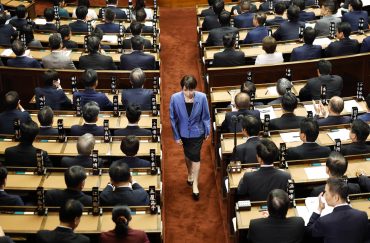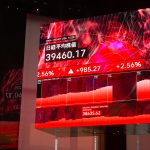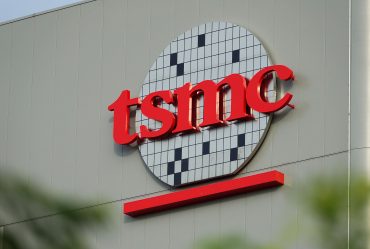
- Asia Markets
- Global Markets
- Nikkei 225
Nikkei Record High as Japan’s Political Shift Attracts Global Capital
10 minute read

Japan’s Nikkei 225 hits a record high as policy continuity, Yen stability, and global inflows reshape Asia’s most resilient equity market.
The Nikkei 225 closed at 49,316.06 on October 21, climbing 130.56 points to shatter its previous record of 42,229.26 set last July. The move—modest in percentage terms at 0.27%—carries outsize significance for investors recalibrating their exposure to Japanese equities after decades of false starts and dashed expectations.
The catalyst was political theater in Tokyo. Prime Minister Shigeru Ishiba’s cabinet resigned en masse following the Liberal Democratic Party’s leadership election, a constitutional formality that nevertheless telegraphed the party’s intent to install Sanae Takaichi as Japan’s first female prime minister. Markets had already priced in Takaichi’s ascent; her track record at the Ministry of Economy, Trade and Industry—pushing through semiconductor subsidies and supply-chain resilience programs—reads like a wish list for institutional investors burned by Japan’s previous reform cycles.
Policy Continuity Meets Global Synchronization
What separates this rally from earlier head fakes is the confluence of credible domestic policy and unusually synchronized global conditions. The Bank of Japan has its benchmark rate at 0.5% after July’s hike, a glacial pace by historical standards but enough to stabilize the yen around 145 to the dollar without choking off credit. Ministry of Finance projections see 2–3% GDP growth through 2027, contingent on productivity gains that Takaichi’s deregulation agenda is designed to unlock.
Her policy framework draws heavily from the LDP’s 2014 “Japan Revival Vision,” emphasizing deregulation, technological investment, and supply-chain security—core elements of Abenomics that have underpinned the recent corporate earnings recovery. During her 2023 tenure advancing the Economic Security Promotion Act, Takaichi allocated significant funds for domestic semiconductor production and renewable energy transitions, moves explicitly designed to mitigate geopolitical dependencies. This continuity matters: investors have watched too many Japanese reform agendas wither under bureaucratic resistance or political turnover.
Overseas, the setup couldn’t be better. U.S. markets closed higher on October 20—the S&P 500 up 1.1%, the Dow up 1.2%—on cooling inflation data that keep the Federal Reserve on track for two quarter-point cuts by year-end. That’s compressed risk premiums and resuscitated yen carry trades, channeling foreign capital into Japanese stocks at volumes not seen since the early days of Abenomics. Japan Exchange Group data show ¥3.2 trillion in foreign inflows for the week ending October 18, up 28% from the prior week. Historical correlation analysis suggests a 1% rise in the Dow typically translates to a 0.7% gain for the Nikkei, amplifying Tokyo’s sensitivity to U.S. market momentum.
Breadth Beyond the Headline
The breadth of the rally matters as much as the headline number. The TOPIX closed at 3,512.78, up 0.4% and comfortably above its July peak of 3,259.87—the highest level since the index launched in 1968. This isn’t a narrow rally driven by a handful of exporters. Toyota gained 1.8% on euro-yen strength after the European Central Bank held rates steady amid moderating wage growth. Construction and utilities climbed 1.2% on average, reflecting expectations that the LDP will push through ¥10 trillion in infrastructure spending, a figure already embedded in parliamentary budget documents.
Sector performance tells the story of diversified drivers rather than concentrated speculation. Automotive exporters are benefiting from currency stability and European demand resilience. Domestic-focused sectors are responding to fiscal stimulus prospects. Even defense-related stocks are participating—Mitsubishi Heavy Industries jumped 2.1% intraday on speculation about Takaichi’s nationalist leanings and her support for constitutional amendments on defense spending.

Structural Reforms Gain Traction
Regulatory momentum is reinforcing the shift in ways that extend beyond cyclical factors. The Financial Services Agency’s 2024 governance code updates have driven 85% of TOPIX companies to comply with ESG disclosure requirements, pulling €450 billion in sustainable investment capital year-to-date. This isn’t window dressing; Norway’s sovereign wealth fund and CalPERS have quietly raised Japan allocations to 8% of assets since 2023, citing shareholder returns averaging 35 yen per share in fiscal 2025.
The Bank of Japan’s digital yen pilot, outlined in 2025 whitepapers, represents another structural innovation that could streamline cross-border payments and buttress export competitiveness. These initiatives signal a maturation of market infrastructure that was absent during previous reform cycles. Japan is no longer asking investors to trust promises—it’s delivering measurable governance improvements and technological upgrades that make capital allocation decisions easier to justify.
Risks Remain, But Context Has Changed
The risks are real but manageable, and crucially, better understood than in previous cycles. Japan’s public debt exceeds 260% of GDP, per Ministry of Finance quarterly statistics. Demographic headwinds subtract 0.8% from annual labor productivity each year, a structural drag that no amount of monetary easing can fully offset.
Takaichi’s nationalist instincts—particularly her support for constitutional amendments and her ties to the Abe faction—could rattle investors if mishandled. Her approach to regional diplomacy will matter as much as her domestic economic agenda. The defense sector’s intraday volatility offers a preview of the swings those debates could unleash if they dominate the political conversation.
External variables add another layer of uncertainty. The IMF’s October 2025 World Economic Outlook raises Japan’s 2026 growth forecast to 1.1% but flags risks from potential U.S. trade barriers—a wildcard that could undermine export-driven gains. The Federal Reserve’s path matters too; if inflation proves stickier than expected and rate cuts get delayed, yen carry trades could unwind quickly, pulling foreign capital out as fast as it arrived.
A Rally Built on Foundations, Not Froth
Still, the Nikkei’s trajectory from its 1989 bubble peak of 38,915.87 through three decades of consolidation to this new high reflects something more durable than momentum. Market infrastructure has matured. Corporate governance has tightened. The coordination between fiscal, monetary, and regulatory policy is stronger than at any point since the 1980s.
OECD projections suggest Japan will account for 15% of global GDP growth over the next decade, assuming policy continuity. That’s an aggressive forecast, but the pieces are falling into place in ways they haven’t before. The combination of political stability under Takaichi’s likely leadership, accommodative global monetary conditions, sustained foreign inflows, and genuine structural reforms creates a more compelling investment thesis than Japan has offered in years.
Implications for Capital Allocation
For investors, the question isn’t whether to increase Japanese exposure—it’s how much cyclical risk to layer in and how aggressively to hedge currency swings. The current setup favors overweighting Japanese cyclicals with exposure to both domestic infrastructure spending and export markets, while maintaining hedges against yen volatility that could emerge from shifting Fed policy or geopolitical tensions.
Tokyo’s equity markets have spent decades earning skepticism. Institutional memory is long, and the graveyard of failed Japan rallies is crowded with abandoned positions and missed projections. But the data argue that this time carries different weight. The policy framework is more credible, the global backdrop is more supportive, and the structural improvements are more tangible. Japan has finally earned another look—and this time, the foundations suggest the momentum might last.







